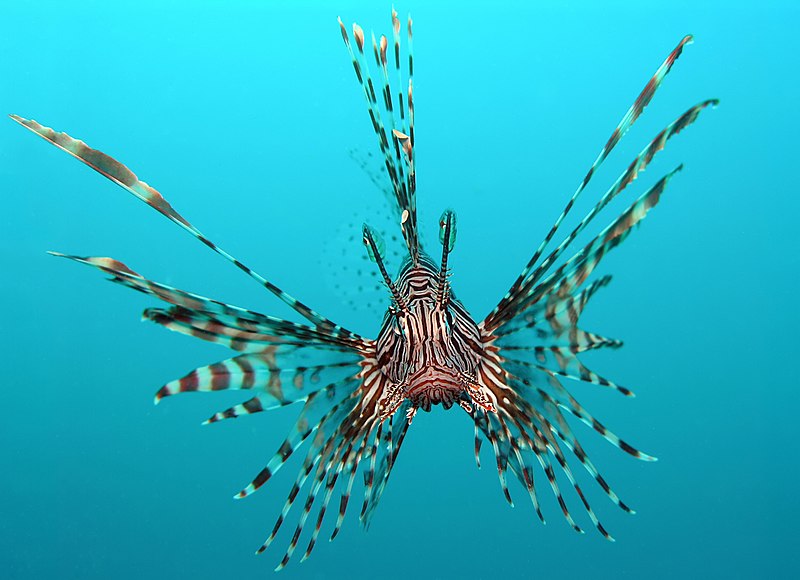When you hear the word Lionfish, most people think of tropical, blue waters far away from the Chesapeake Bay. And it's true, lionfish are native to the reefs and rocky crevices of the Indo-Pacific region. They are a carnivorous fish, generally growing between 11 and 15 inches long with red and white zebra stripes, showy pectoral fins, and venomous spikes.

The venom of the lionfish is delivered via needle-like dorsal fins but this action is mostly defensive as they rely more so on camouflage and speed to catch their prey. A sting is extremely painful to humans, and the effects can last several days but are rarely fatal.
Now what does this mean for the Chesapeake Bay? Two of the 12 species of lionfish have established themselves as significant invasive species off the East Coast of the United States and in the Caribbean. The red lionfish is the most abundant. Researchers believe that the lionfish was first introduced off the coast of Florida in the 1980s or 1990s, possibly released from someone's personal aquarium or from the destruction of an aquarium in South Florida due to Hurricane Andrew in 1992.
Regardless of how they got there, the population exploded. Lionfish have no natural prey in that region, breed rapidly, and have a voracious appetite for smaller fish, causing a displacement of native populations. Currently, this invasive species has year-round populations from the Gulf of Mexico to the Outer Banks. In warmer months they have even been spotted as far north as Massachusetts.
Lionfish need warm, clear saltwater to survive so as of yet they have not been spotted in the Bay and they cannot survive northern winters. They are a sight predator and need clear water to hunt their prey, and in the summer months, the shallow Bay is often murky. The Bay also experiences low-oxygen zones in the warmer months caused by algal blooms. All of these factors would limit the lionfish from establishing a foothold in our area, but the fish has already proved more resilient than initially believed.
One study found that they could tolerate lower salinity levels than originally thought, and another found that lionfish can winter in waters as far north as Cape Hatteras, NC. So while it does not seem likely we will be seeing these pesky invaders any time soon, it is worth keeping them in mind, and invasive species in general.
If the lionfish was introduced to the East Coast in the 1980s, then it is scary to think about how much of a foothold they have already established.